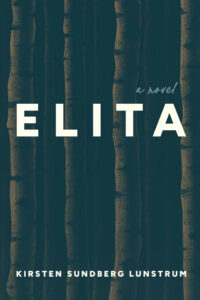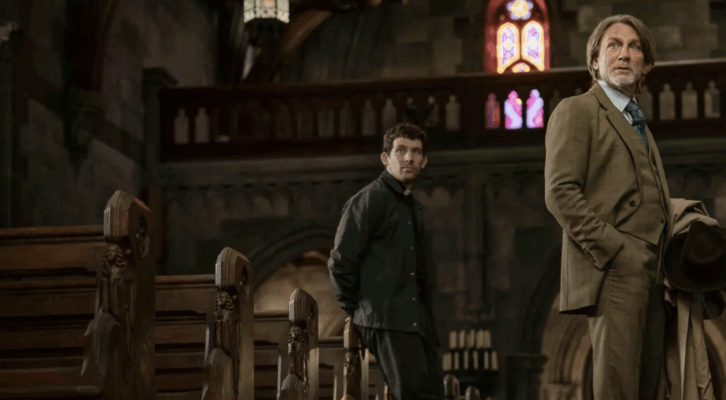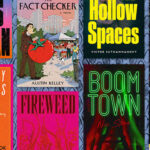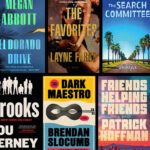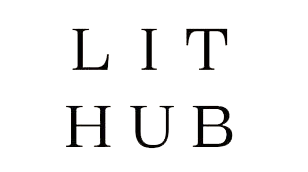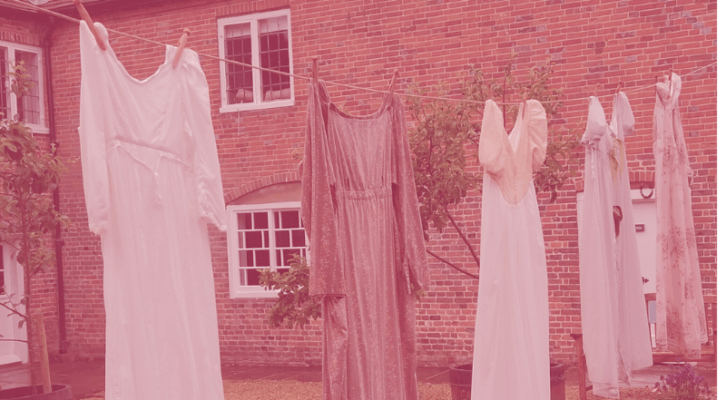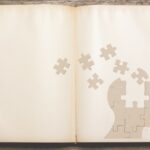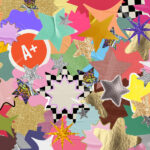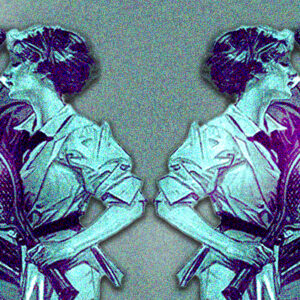In the earliest days of the pandemic, a friend called me and said, “So, do you feel a little more relaxed than usual this week?” It was a strange question. We’d just gone into lockdown, we were washing our groceries, and nothing about the future felt sure or clear or safe. I paused, though, because she was right. I confessed this with a bit of guilt—the world was terrified; what kind of person was I that I felt suddenly, uncharacteristically, focused and calm? But she reassured me. “The fears that were only in your head before are everybody’s fears now. You don’t have to carry the uncertainty alone anymore, and there has to be some relief in that.”
I’ve thought about that observation often since then. I’m an anxious person and always have been. Even as a child, I had the sort of brain that too easily spins each moment toward its worst possible conclusion, my imagination a predictable soothsayer of disaster. I’m a good visualizer, too, capable of seeing my fears realized in great detail, like conjuring waking nightmares. And let me be direct with you, readers, and say that—perhaps as they have been for many of you, too—those nightmares have only been amplified and sharpened lately, many previously distant fears brought close by the political realities of our day. This winter, I’m finding myself often literally breathless with the relentlessness (and now realism) of my anxiety.
As a kid this was a problem for me. I had trouble sleeping, trouble winding down and “turning off” my thoughts. To help ease this trouble, my parents read to me every night until I could read to myself, and then they piled books beside my bed so that I had something to turn to when sleep eluded me. Quickly, the books I requested were mysteries. My grandmother was the one to introduce me to the genre when she gifted seven-year-old me her original Nancy Drews from the 30s and 40s. The Secret of the Old Clock, The Hidden Staircase, The Mystery of Lilac Inn, and The Mystery of the Tolling Bell were my favorites. I read them again and again. Later, I borrowed Mary Downing Hahn and Betty Ren Wright novels from the library and ordered them through my school’s Scholastic Books orders. (Sidenote, but was there anything better than the day the teacher passed out the newsprint Scholastic Book flier?) Like many girls of my generation, Wright’s The Dollhouse Murders—the 1983 copy with the purple framed cover—became a literary fixture of my life as a young reader. Images from that book (the illumined dollhouse in the dark attic, Aunt Clare’s chocolate chip cookies, the letter falling from the pages of the old books on the parlor bookshelves) still float, ghosts of my readerly past, in the waters of my adult memory.
Later, as a teenager, I found the distinctions within the genre. I sought out the cozy mysteries of Agatha Christie and Rita Mae Brown for bedtime reading; detective novels and procedurals and courtroom dramas by Mary Higgins Clark and John Grisham for thrilling, fast reads; and the darker, more psychological (“literary”) mysteries for the experience of readerly challenge and immersion. Among these last sort, I devoured and loved Daphne du Maurier’s Rebecca, Raymond Chandler’s The Long Goodbye and The Big Sleep, and David Guterson’s Pacific Northwest historical courtroom drama Snow Falling on Cedars—which is set on the waters of my own backyard and so felt deeply familiar to me. In college, I read mysteries like delicious treats I could savor only after I’d digested the supposedly heartier meals of my English major assigned texts. A professor recommended Donna Tartt, and another commanded I read Patricia Highsmith immediately. These writers knocked me out. I knew just enough about narrative structure and the use of time as a central device for creating tension within fiction to be completely wowed by how tightly the authors of literary mysteries managed to smoothly control these elements within their novels. From there, I read Kate Atkinson, Sarah Waters, Tana French, and Peter Høeg. A library of treasured mysteries began to grow on my bookshelf.
Now that I’m a writer myself, I often go back to these books and re-read them, working through their plotting and intricate character development again in order to better understand the novels as examples of craft. Mysteries are masterclasses in fictional craft. Characters in a mystery must be distinct and believable, yet also able to make real change—to unsettle the reader’s expectations by acting against their own best interests and desires. Setting in a mystery must not be flat, reduced to wallpaper as setting often is in literary novels. Instead, place is essential, often integral, to the plot of a mystery, which relies on the author’s ability to create atmosphere and tension. And time! Most fiction writers agree that if fiction is, as an art form, about anything, it is about time, and I’d argue that the writers most adept at manipulating time as an element of story are mystery writers. To study a mystery is to understand the essential intersections between time and character, time and event, time and the stakes of each choice a character makes. Mysteries are always about a clock ticking forward and both the character and the reader breathlessly racing to outpace time.
What compels me to keep coming back to the genre, though, is something deeper than either my long history with the genre as a reader or my craft interests as a writer. It is the way mysteries meet my innate anxieties and manifest them on the page. There’s a core recognition for me in seeing my fears played out through narrative that churns on fear, and a relief of sorts in experiencing that fear within the safe embrace of a book. An anxious mind like mine is always asking “What if…?” What if I forget to turn off the stove, and the house burns down? What if a stranger breaks in through my window while I’m sleeping? What if one of my children doesn’t come home from school today as usual? “What if?” my mind is prone to asking on loop. In the worst of times, that loop can feel like a cage I am frantically welding around myself.
Mysteries, however, find the freedom of this question. Mysteries anchor story in “What if?” and bear the question outward rather than coiling in on it. Mysteries take “What if?” to its worst possible conclusions, and in doing so they make certainty of the terrifying uncertainties of life. As a genre, mystery excavates a central truth about the experience of being human in the straightforward acknowledgment that pain and suffering, terror and injustice, violence and loss will happen—do happen—and are, in fact, part of what one must accept in order to live as freely as possible. Mysteries don’t look away from the fear of these horrors of human life, nor do they sentimentalize or sensationalize that fear (as romance might), nor even necessarily moralize it (as sci fi and traditional domestic fiction often do). What mysteries do is materialize and normalize the universal but often invisible or unspeakable fears of life. In a mystery, the reader is immersed in her anxiety, but safely, with the guarantee of both the distance to reflect on what scares her and the plot to resolve that fear.
When I began to write my own mystery novel, Elita, it was this determination to follow the fears behind the question What if…? that led me into my story. What if a child was discovered surviving alone on a remote island in Puget Sound? What if no one could understand this girl, nor how she’d ended up on the island, nor how she’d kept herself alive there? What if against all the harm that could befall her as a girl alone in the world, one woman wanted to keep this child safe? I left my own anxieties about loneliness and isolation, about the tensions between independent freedom and social conformity, about inhabiting a female body in a world that seeks far too often to control or dominate female bodies unroll, unfettered, as I wrote. In loosening my tight desire to control and subdue my anxieties, the story was able to expand instead of compress, and the mystery of my character, Atalanta, and her unlikely guardian Bernadette took shape in my mind and on my pages. Writing a mystery proved to be not all that different from reading one, my tasks as the writer largely to pay attention, to manage the ticking clock of my plot, and to keep asking—unflinchingly and with a sense of discovery rather than fear—What if?
***


